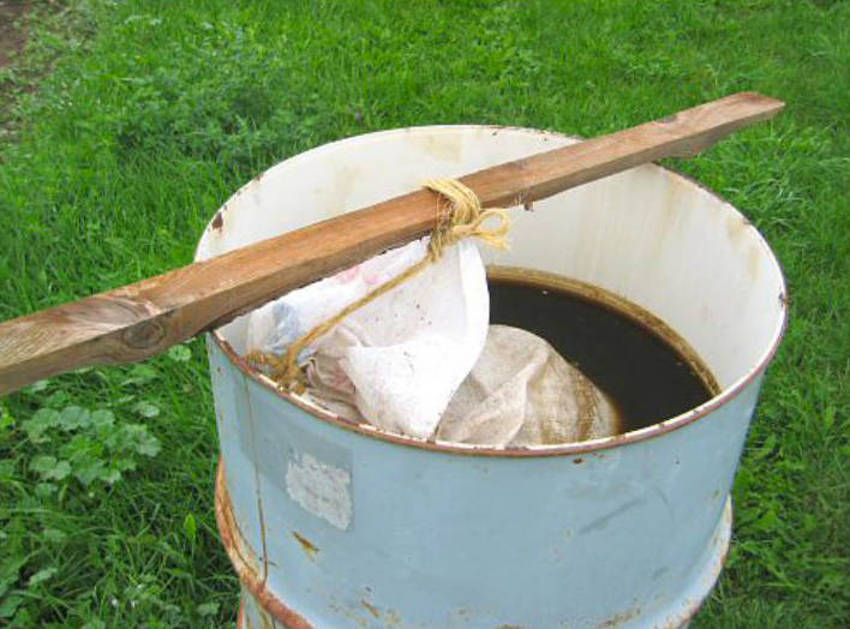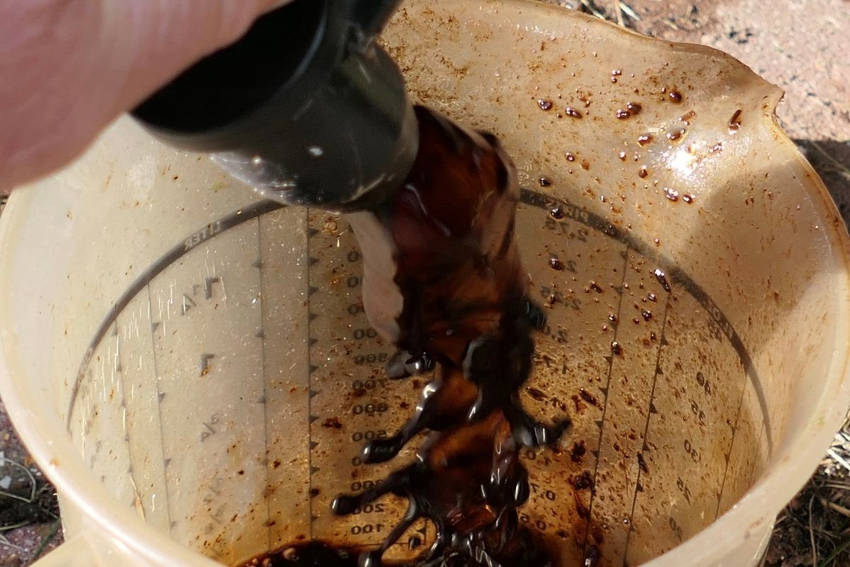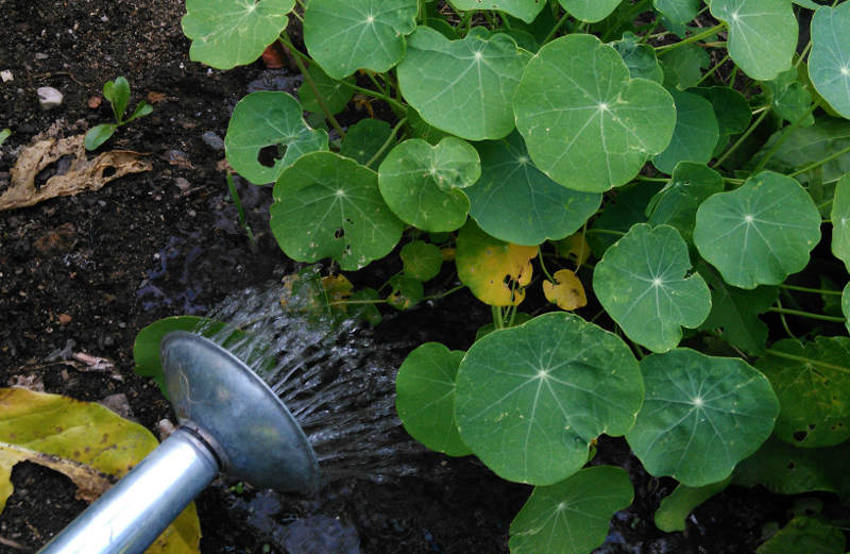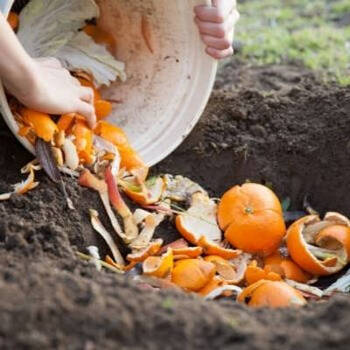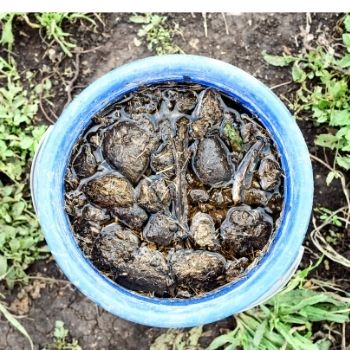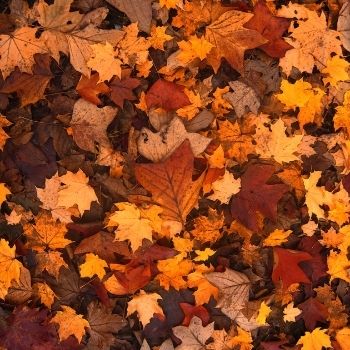A garden isn't a closed ecosystem. Every time you harvest a vegetable or cut a bunch of flowers, you're removing vital nutrients from the cycle of growth and decomposition. Worse, every time you finish a weeding or pruning session, or even just mow the lawn, you're also removing nutrient resources but this time with nothing to show for it.
A compost heap is a traditional way of reducing this wastage, but unless you're a dedicated composting expert, turning weeds and cuttings into a usable product takes months or even years. However, there's a quicker way of making good use of the waste your garden produces. It's called compost tea, and it's basically a homemade liquid fertiliser that recycles as much unwanted organic material as possible.
Why Use Compost Tea?
There are four main benefits your garden will gain from compost tea.
- Weeds, cuttings, and crop debris are recycled into a nutrient-rich, organic fertiliser, reducing the long-term drain on your garden's resources.
- The resulting liquid offers flexible, fast feeding whenever your plants need a boost.
- Regular use increases your plants' resilience to pests and disease.
- Compost tea improves soil structure by boosting microbe levels for a healthier ecosystem base.
And the even better news is that compost tea is easy to make, needing only a few household items, some garden waste, and a few weeks of waiting.
How to Make Compost Tea
To make this powerful liquid fertiliser, you'll need a large bucket or other container with a fitting lid. You'll also need a hessian bag or an old towel to contain the fertiliser ingredients, along with a length of string to secure everything.
And of course, you'll need some organic materials that will ferment to produce the finished tea. Some of the best tea ingredients are common weeds, especially invasive species. Composting these aggressive plants isn't always a good idea, as unless your compost heap gets hot enough to kill the seeds and roots, you're likely to spread the problem around your garden.
In contrast, when you use invasives to make tea, you'll extract all the nutrients they contain, while also drowning the plant so that the solid remains can be safely composted in the ordinary way.
Alongside invasives, any relatively soft plant cuttings, grass clippings, roots, and so on can be used, as they'll all add their share of nutrients as the mixture ferments. However, if you're planning to use the tea for feeding edible plants, it's probably wise to avoid using any plants which are known to be toxic.
Other additions to the brewing base can include fully or partially decomposed compost, straw, and a handful of ordinary soil to help seed the microbe content of your mixture.
Putting It All Together
To begin, put the brewing ingredients into the cloth bag or pile them in the centre of the towel, and tie up to make a secure bundle. Make sure the ingredients can't escape, but don't compact them too tightly, as you want the brewing liquid to reach into the centre of the contents.
Put the bundle into the container, with the string hanging over the side so that you can easily haul the bag out later. Alternatively, suspend the bag from a stick across the top of the container so that the package hangs in the middle. Add enough water to cover the bag completely, but leave a couple of inches or so below the rim to avoid splashing and spilling.
In an ideal world, collected rainwater would be used to make compost tea. But if you use mains water, fill up the bucket a couple of days before you start brewing, and leave it uncovered in a sunny spot. This will let any traces of chlorine dissipate, speeding up the fermentation.
Once the ingredients and water have been added, cover the bucket loosely, and the mixture will soon start to ferment. You can either leave it alone to do its work, or give the mixture a quick stir a couple of times a day to move things along.
You'll likely notice a strong and possibly unpleasant smell emerging after a day or two. This is nothing to worry about, and is just a sign that the fermentation has begun. However, it's best to be aware of this in advance and place the container well away from family areas, neighbours, and so on.
After two to three weeks the smell will begin to abate and the liquid will have turned dark brown. Remove the bag, and add the remains to your compost heap. They'll hopefully have given up their nutrient content to the liquid, but will still be useful for improving soil texture.
Strain the liquid if it contains seeds or other debris, and either use immediately or store in containers, loosely capped to allow any further fermentation gases to escape.
Of course, the same method can be used without the hessian bag and the resulting fertiliser will be equally as good. The problem is the weeds and other organic matter will turn into a sloppy mess that can be hard to manage. The liquid will also be full of sediment making it impossible to use with spray bottles and watering cans without filtering first. If you use this method you are best to apply the liquid to your plants with a bucket and be prepared for things to get a little messy.
How to Use Compost Tea
If all's gone well you'll now have a strong, dark liquid packed with nutrients and microbes. As with all fertilisers, it will need diluting before use, or it can scorch the plants you're trying to feed. The dilution rate needed will vary from batch to batch, but one part tea to ten parts water is a good starting point. You should end up with a feed the colour of a weakly brewed black cuppa.
For seedlings, delicate plants, or houseplants, you can up the dilution rate to one in 20, to keep the salt levels well under control. A similarly dilute mixture can also be used for foliar feeding, where the fertiliser is sprayed directly onto the leaves of plant for fast absorption and quicker results.
However, as with all foliar feeding it's wise to err on the side of caution, and use a weak mixture on a small part of the plant as a test. If the plant seems happy after a day or two, you can go on to spray the rest.
But the most common way of using homemade compost tea is as a ground fertiliser. If the soil is dry, water it lightly to ensure the tea can find its way down to the roots rather than pooling and drying on the surface. Feed around the base of the plants, being careful to avoid splashing, especially if you're using a stronger dilution. Feeding can be repeated roughly fortnightly, or as needed during periods of strong growth, flowering, or fruit setting.
A Note for Edible Crops
Special care needs to be taken when using compost tea on edible crops. The liquid contains live microorganisms, which are almost certainly harmless but shouldn't be recklessly ingested. And that's not to mention the strong smell and (presumably) taste of the feed.
As with all fertilisers, it's wise to avoid feeding crops for at least a few days before harvesting, and also to wash the produce thoroughly before eating or cooking it. Also, consider wearing protective gloves whenever you're working with compost tea, as splashes on your hands can remain fairly pungent even after several washes with soap and water.
But so long as you take a little care when using it, homemade compost tea is great for all your plants, and is an inexpensive and effective way of using your garden's resources to their absolute best.
